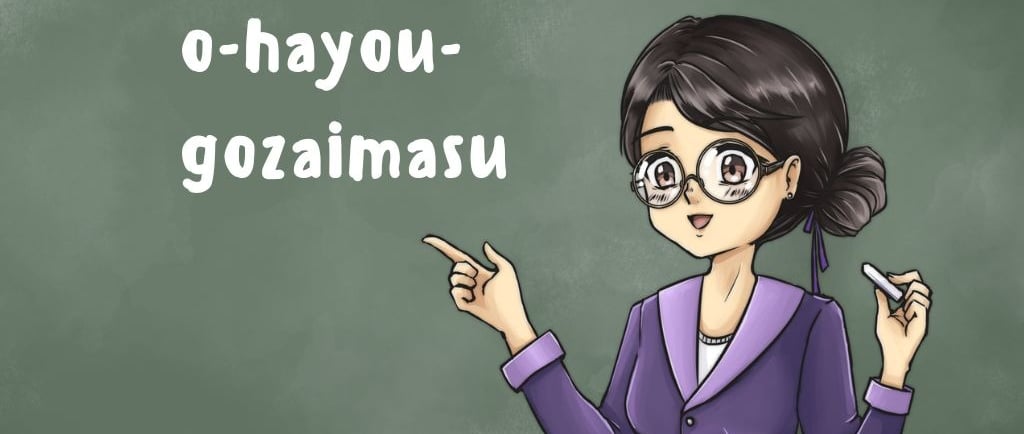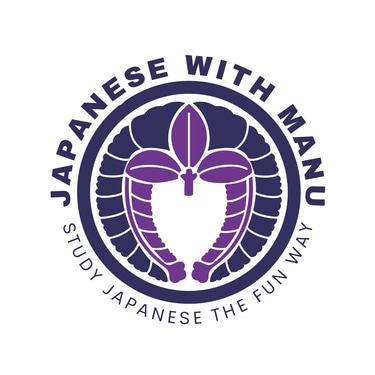Ohayou gozaimasu - good morning?
Did you know that there is neither "good" nor "morning" in ohayou gozaimasu? Learn more about its background and real meaning here!
Manu-sensei
7/1/20253 min read


What could possibly go wrong with saying "good morning" in Japanese?
おはようございます (o-hayou-gozaimasu)!
More than you might think. For example, you don't only say it in the morning.
But first, let's go back to the origin. Like many other polite phrases, ohayou (the ou is pronounced as a long o) gozaimasu (the u at the end is silent) おはようございます has a rich historical background.
It was originally based on a greeting from the world of Kabuki (Japanese traditional theater):
o-hayai o-tsuki de gozaimasu
おはやいおつきでございます。
These were the words of gratitude from Kabuki actors in appreciation for the hard work of their helpers. These assistants would begin work hours before the performance, doing things like helping the actors prepare, applying their makeup, and cleaning the stage.
O is the polite syllable (as in o-sushi or o-cha, green tea).
Hayou (from the current version o-hayou) comes from hayai (早い) early/quickly.
o-tsuki (the o is the polite syllable, like before), the tsuki comes from "arrive" (tsuku, 着く). If you have already learned some kanji, you might know this one, which also means “to put on clothes,” but in this case it is read kiru 着る, ki as in kimono 着物, literally “thing to wear.”
You may be wondering why "to dress" and "to arrive" have the same kanji. It would be difficult to explain this without going in depth about how these words work in Japanese, but you can think about it as the clothing arrives at your skin when you put it on.
De gozaimasu ございます is a very polite form of desu です—to be. The "u" in desu is silent, as in "gozaimasu"; the "u" at the end of a word is often silent, especially in "desu" and "-masu."
So, if you translated the whole sentence literally, it would mean:
You arrived early (and that's why I'm very grateful).
"おはようございます" has been used as a polite phrase since the Edo period (1603-1868, the era in which the small fishing village of Edo became the capital, now known as Tokyo).
There is also a slightly more casual version: "ohayou" (おはよう). You basically use it for close friends and family members.
However, when you are showing respect to someone, for example when you are speaking to your boss, or to someone with seniority over you, you should use the longer and more polite version.
This is especially true if you're staying overnight with your (future) in-laws for the first time—after all, you don't want to come across as an uncouth foreigner that they wouldn't want to welcome into their family.
The next time you say "ohayou gozaimasu おはようございます," think back to the story about the Kabuki actors—and you can even imagine that you are one! 😊 Having fun like this makes learning Japanese much more interesting and engaging.
And about the time when you should say this: originally, it was used for the first person you met that day, especially at your job, even if your job started in the evening or at night.
That's why you still say "おはようございます" to your colleagues today even if, for example, you work at a bar and start work in the evening.
Understanding the background and true meaning of polite phrases will give you a huge advantage. This helps you understand the culture, but it also helps you internalize what you are learning. When you try to memorize a lot of words from a list it is like one small dot on a map. But when you understand the backgrounds of and differences between the words, it is like you can reveal whole sections of that world.
This is exactly how my courses and books are structured. Follow me now for even more helpful tips about Japan and the Japanese language :)
Are you just starting out and want to be able to understand how to construct your first simple sentences—without just memorizing them? Then sign up for my three hour crash course for beginners and learn your first Japanese characters, words and sentences.
Are you looking for beginner level stories written in Japanese? If you're already comfortable with hiragana and katakana, you can check out my book "Reading Japanese for Beginners"—no knowledge of kanji needed! It contains two stories and everything you need to understand them (grammar, vocabulary, and even some interesting information about Japan).
Explore
Discover Japanese language and culture through our online resources and courses.
Connect
youtube and podcast
© 2025 Manuela Ito-Loidl GmbH, Pfaffingstraße 78, 4802 Ebensee, Austria. All rights reserved.
manu (at) japanesewithmanu.com; FN 574287 s; UID ATU77802558
Privacy Policy/LEGAL NOTICE
